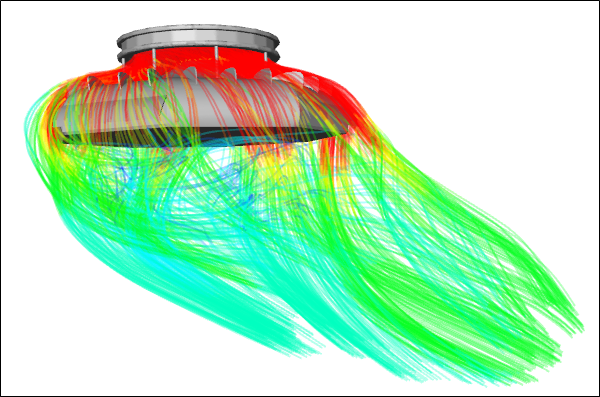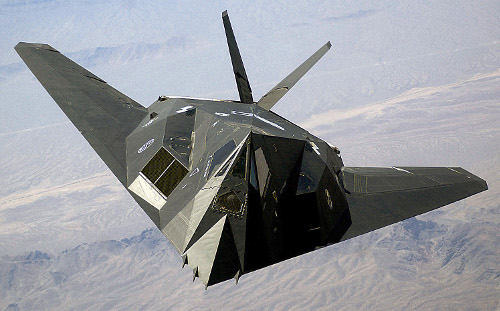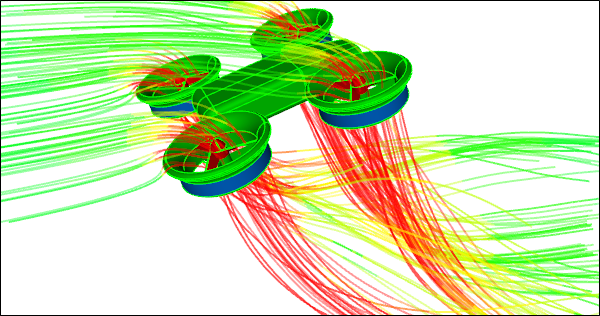
CFD Helps Unconventional Concept Designs Succeed
When you find yourself tasked with the design of something unconventional, then Computational Fluid Dynamics (CFD) is here to help. For instance consider the aircraft industry. It used to be that the dominant type of aircraft required a pilot and therefore a cockpit with a good view of the world. Then Unmanned Aerial Vehicles (UAVs) went mainstream and everything changed.
 Unconventional UAV CFD Simulation
Unconventional UAV CFD Simulation
Aircraft designers of yore typically laid out their concepts with the cockpit, by necessity, at the front of the airplane, the smooth airfoil sections wings in the middle, the tail and rudder at the rear - all centered on a tubular fuselage. The big decision was often where to position the engines, but here again standard design practice dictated that most civil airplanes use under wing mounts and most military airplanes use internal mounts in the rear fuselage. The design rules for such airplanes were well established and relatively well understood. Concept designs could be assessed relatively easily using historical data generated by wind tunnel tests and flight tests of similar configurations.
The advent of new technology and radical design concepts has broken this virtuous circle of old design data helping assess future concepts. An example of a step change in military airplane design was the introduction of stealth in the Lockheed F-117 Nighthawk. Nothing like the F-117 had ever been conceived previously, outside of science fiction. The aerodynamic analysis could not rely on historical data for help, and so instead the design rules for its faceted shape had to be established from scratch using rudimentary (by today's standards) CFD, wind tunnel tests, and costly flight tests.
 F117 Nighthawk
F117 Nighthawk
We are currently in the midst of another step change in aircraft design that has removed the need for a pilot in the vehicle with the advent of both small and large UAVs. No pilot equals no cockpit, and so it is open season once again for radical design concepts. Historical aircraft design rules do not address fully the new batch of UAV concepts emerging and so a cost effective means to evaluate these concepts is imperative for a safe and cost effective UAV industry.
 Quadcopter UAV CFD Simulation
Quadcopter UAV CFD Simulation
CFD has matured into an excellent concept design analysis tool that is now an essential part of most aerodynamic design processes alongside wind tunnel tests and flight tests. CFD is well positioned to answer the call to rapidly and cost effectively build up a UAV design language so that in the not too distant future UAV design will become more routine as the knowledge base deepens and certain configurations become accepted. Of course that is until the next step change in aircraft design - anti-gravity device anyone?
- Richard Smith's blog
- Login to post comments
Select Language
Recent blog posts
- CFD Simulates Distant Past
- Background on the Caedium v6.0 Release
- Long-Necked Dinosaurs Succumb To CFD
- CFD Provides Insight Into Mystery Fossils
- Wind Turbine Design According to Insects
- Runners Discover Drafting
- Wind Tunnel and CFD Reveal Best Cycling Tuck
- Active Aerodynamics on the Lamborghini Huracán Performante
- Fluidic Logic
- Stonehenge Vortex Revealed as April Fools' Day Distortion Field

